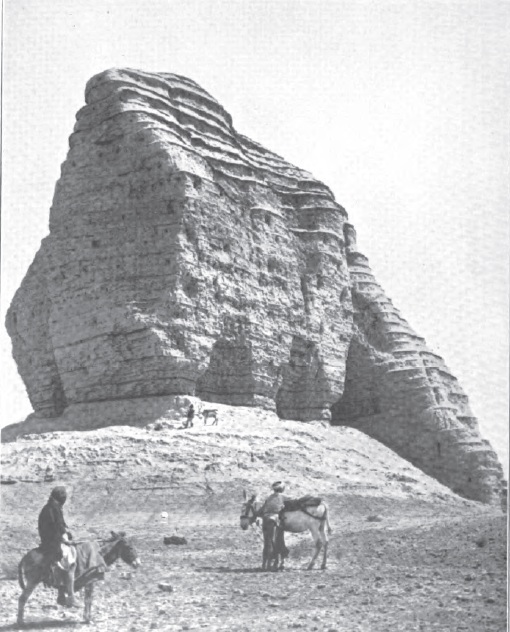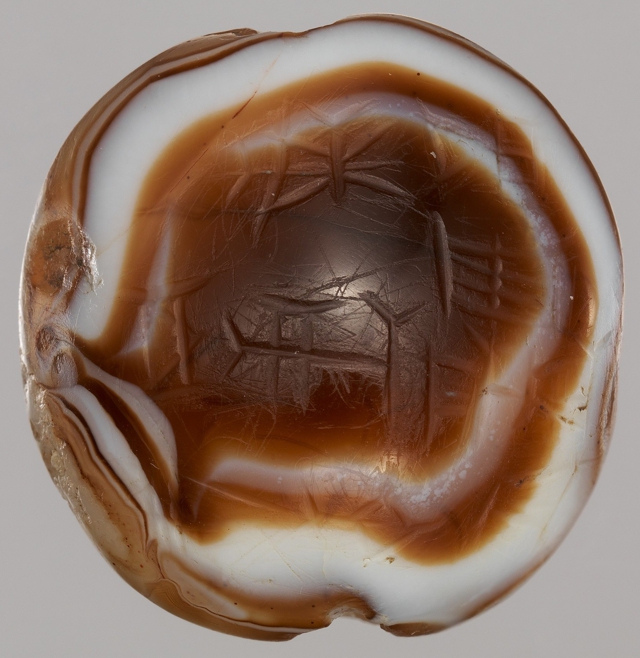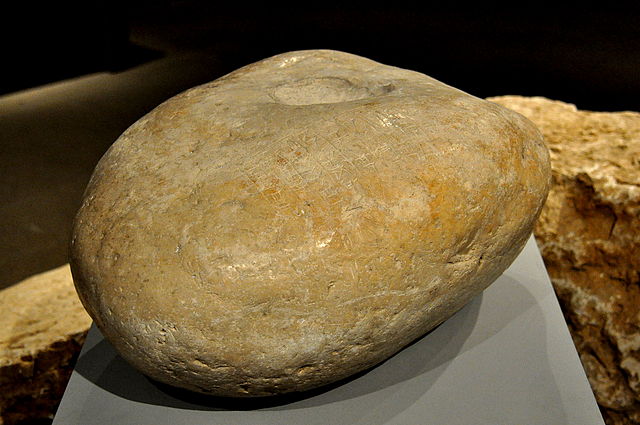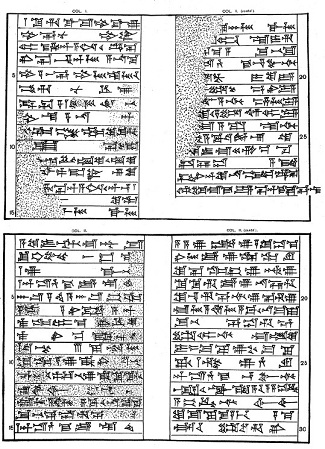
| KURIGALZU I
‘Aqar Quf, ancient Dur-Kurigalzu (monumental ziggurat remnant, west of Bagdad) Reign
: x - 1375 BC
Regnal
titles of Kurigalzu I : King of Babylon
Kurigalzu I (died c. 1375 BC), usually inscribed ku-ri-gal-zu but also sometimes with the m or d determinative, the 17th king of the Kassite or 3rd dynasty that ruled over Babylon, was responsible for one of the most extensive and widespread building programs for which evidence has survived in Babylonia. The autobiography of Kurigalzu is one of the inscriptions which record that he was the son of Kadašman-Harbe. Galzu, whose possible native pronunciation was gal-du or gal-šu, was the name by which the Kassites called themselves and Kurigalzu may mean Shepherd of the Kassites (line 23. Ku-ur-gal-zu = Ri-'-i-bi-ši-i, in a Babylonian name-list).
He was separated from his namesake, Kurigalzu II, by around forty-five years and as it was not the custom to assign regnal numbers and they both had lengthy reigns, this makes it exceptionally difficult to distinguish for whom an inscription is intended. The later king is, however, better known for his military campaign against the Assyrians than any building work he may have undertaken. It is now thought, however, that it was he who was the Kurigalzu who conquered Susa and was perhaps instrumental in the ascendancy of the Igehalkid dynasty over Elam, ca. 1400 BC.
Conquest
of Elam :
Kurigalzu, the king of Karduniyas, conquered the palace of the city of Šaša in Elam and gave (this object) for the sake of his life as a gift to Ninlil, his lady.
-
Kurigalzu, tablet CBS 8598, University Museum, Philadelphia
Diplomacy
:
Bead with cuneiform inscription of Kurigalzu I Prior diplomatic correspondence is evident, from study of the Amarna letters and includes evidence of dialogue between Thutmose IV and Kurigalzu as attested to by Amenhotep III in his letter, designated EA 1 (EA for El Amarna), to Kadašman-Enlil. Burna-Buriaš II reminded Akhenaten in his letter, EA 11, that Kurigalzu had been sent gold by one of his ancestors, and, in EA 9, reminded Tutankhamen that Kurigalzu had turned down a request from the Canaanites to form an alliance against Egypt.
Through
marriage
A Neo-Babylonian copy of a literary text which takes the form of a letter, now located in the Vorderasiatisches Museum in Berlin, is addressed to the Kassite court by an Elamite King and details the genealogy of the Elamite royalty of this period. Apparently, he married his sister to the Elamite king Pahir-iššan, the son of Ige-Halki, and a daughter to his successor, Humban-numena. This may have been Mishim-ruh, who is cited in royal inscriptions. The princess went on to bear Untash-Napirisha, the next king who subsequently married Burna-Buriaš’ daughter. The author of the letter is thought to be Shutruk-Nahhunte, ca. 1190-1155 BC, who claims descent from Kurigalzu’s eldest daughter and also wed the eldest daughter of Meli-Šipak, the 33rd Kassite king. Unfortunately the letter inserts Nabu-apla-iddina (888 – 855 BC) “an abomination, son of a Hittite”, into the narrative in the place one might have supposed that Marduk-apla-iddina I was to appear, the substitution of dAMAR.UTU by dAG being an unlikely slip of the stylus, making a chronological conundrum and this may be the purpose of the “letter”, to denigrate the later king through the tongue of the earlier one.
Building
works :
Door socket from Dur-Kurikalzu He was the first king to build a royal residence bearing his name, a new capital city founded over an older settlement and built around 1390 BC, named Dur-Kurigalzu, or 'fortress of Kurigalzu', in the far north of Babylonia (modern ‘Aqar Quf). It was positioned to protect an important trade route that led east across the Iranian plateau to Afghanistan, the source of lapis lazuli. The 170-foot-high ziggurat of Enlil can still be seen on the western outskirts of Baghdad, with its reinforcing layers of reed matting and bitumen and the remains of three temples at its foot. Rawlinson first identified the site in 1861 from the brick inscriptions. Excavated in 1942–45 by Seton Lloyd and Taha Baqir, the city covered 225 hectares and included the Egal-kišarra, or “Palace of the Whole World”, a vast palatial and administrative complex.
In an adoption contract which sternly warns the adoptee, “If [Il]i-ippašra says, ‘you are not my father’, they shall shave his head, bind him and sell him for silver,” the date formula used, “in the month of Šabatu, the 19th day, the year Kurigalzu, the king, built the Ekurigibara,” predates that which was introduced during the reign of Kadašman-Enlil I and that had become de rigueur by the later reign of Kurigalzu II. The Ekurigibara of Enlil was a temple in Nippur.
During the excavation of Dur-Kurikalzu 5 fragments of a larger than life size statue were discovered. They contain the longest yet found Kassite Sumerian inscriptions.
The autobiography of Kurigalzu :
Autobiography of Kurigalzu A neo-Babylonian copy of a text recording the endowment by Kurigalzu, son of Kadašman-?arbe, of a temple of Ištar with an estate situated on the Euphrates near Nippur, is known as the autobiography of Kurigalzu and comes in the form of a small hexagonal prism of light-yellow baked clay and a fragmentary cylinder. In it, he takes credit for being the
…finisher of the wall, kišuru, and the one who completed the Ekur, provider for Ur and Uruk, the one that assures the integrity of the rites of Eridu, the constructor of the temple of An and Inanna, the one who ensures the integrity of the Sattukku (food allowance) offerings of the great gods.
-
Autobiography of Kurigalzu, Prism BM 108982 and Cylinder NBC 2503
Other
sources :
A seal is inscribed nur-[d]-x, son of Kurigalzu, and claims the title NU.ÈŠ [d]en.líl, nišakku-priest, which is shared with others, including three governors of Nippur and other princes. He rewarded an individual with this title in a dedicatory cone known as the Enlil-bani land grant kudurru. The precise meaning of this title and the identity of the Kurigalzu, I or II, are uncertain.
Source :
https://en.wikipedia.org/wiki/Kurigalzu_I |



